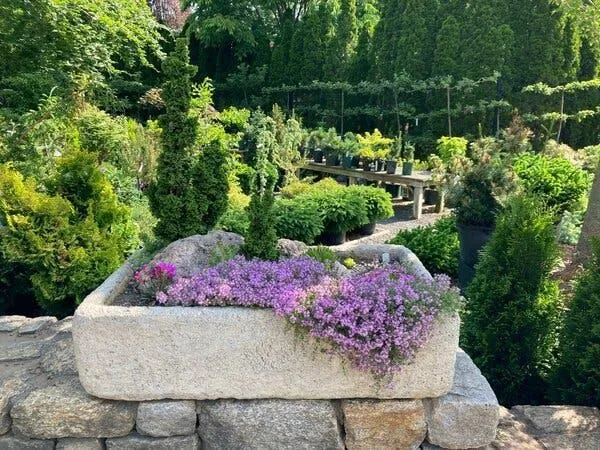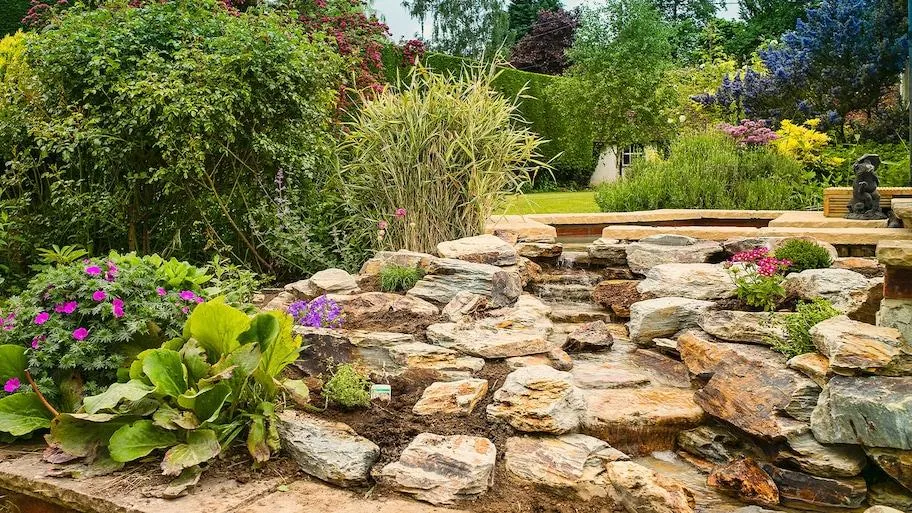An Introduction to Cascade Plants: Understanding the User’s Needs
When a gardener searches for “cascade plants,” they likely have a few key intentions in mind. As a plant enthusiast myself, I can relate to their goals of beautifying outdoor spaces while also learning about new plant varieties. In this article, I’ll address some of the main reasons someone may be interested in cascade plants and provide helpful information to satisfy their gardening needs.
What are Cascade Plants?
To start, it’s important to define what exactly a cascade plant is. In simple terms, cascade plants are varieties that can be trained or will naturally drape themselves over the edges of containers, baskets, or other surfaces from which they hang. Their trailing or vine-like growth habit allows them to “cascade” downward in a visually appealing way perfect for covering walls, arbors, or other vertical surfaces.
Some common examples of cascade plants include:
- Ivies (Hedera species)
- Creeping fig (Ficus pumila)
- English ivy (Hedera helix)
- Sweet potato vine (Ipomoea batatas)
- Trailing fuchsia (Fuchsia magellanica)
While viewing photos online, the user is likely drawn to the flowery beauty, lush greenery, or bold foliage patterns these vines can provide. Cascade plants offer a unique way to adorn hard-to-fill spaces both indoors and out.
Benefits of Using Cascade Plants in the Landscape
From my experience in gardening, there are several advantages to incorporating cascade plants:
They create the illusion of more plant coverage and visual fullness without requiring a large planting area. For small patios or balconies, cascade plants maximize the growing space.
Their trailing growth allows plants to soften harsh edges, curtain walls, or hide unattractive areas. Specifically, English ivy makes a great privacy screen and can disguise foundations or fence lines.

Many cascade plants like sweet potato vine produce charming blooms, adding seasonal color and interest. Some even have colorful variegated foliage for year-round visual appeal without flowers.
Their texture, pattern, and texture make cascade plants versatile design elements. Use them to draw the eye upward or allow branches to skim across walkways for an artsy, wild touch.
Due to their compact nature, cascade plants pose little risk of overgrowing their allotted space and requires less maintenance than a bush or tree. You won’t find yourself constantly pruning them back!
In summary, cascade plants enable gardeners and landscapers to enjoy lush greenery without taking up valuable square footage on the ground. They beautify hard-to-reach spots and complement other planting schemes.
Tips for Planting and Caring for Cascade Plants
Now that the user understands why cascade plants are a smart choice, they likely have some follow up questions about the proper care required. Based on my years cultivating these vines, here are a few best practices:
Start with young, healthy plant material in spring or fall for the best chance of survival. Make sure roots can freely spread in well-draining soil rather than stayingpot-bound.
Provide a sturdystake or trellis for vines to anchor themselves as they gain height. Attach new growth gently to help train the plant in the desired flowing shape.

Water newly plantedvines regularly until established. Check soil moisture about once per week and water thoroughly if dry an inch beneath the surface.
Fertilize with all-purpose plant food after new growth emerges in spring and again in summer. Vines appreciate nutrients to bloom well and display colorful foliage.
Prune judiciouslyto maintain a balanced shape, remove dead stalks, and stimulate additional growth. For best results, trim after flowering to promote a second spring bloom flush.
Bring potted cascade plants indoors beforehard froststo overwinter near a sunny window. Select a spot protected from drafts and rotate pots occasionally for even growth.
Some common pests like scale, mealybugs, or spider mites may damage vines left unattended. Regularly inspect foliage and treat issues promptlyfollowing organic methods if problems arise.
Proper care ensures the user’s cascade plants thrive to fulfill their design purpose for many seasons. With a bit of TLC, these vines make wonderful additions to any landscape!
Planning Ahead for Future Use
Part of the gardener’s original search surely included considering how long their cascade plants might last. While perennial varieties can potentially outlive us, certain factors impact their longevity.

For indoor specimens, going dormant over winter poses stress that may shorten lifespans over many years. Relocating pots outside when warm weather returns can boost vines’ health.
When planted directly in ground beds, expect outdoor cascade plantings to perform stronglyfor 5-10 years, depending on speciesand growing conditions. Factors like climate, exposure, and soil quality make a difference.
To proact English ivy from sending underground runners amok,contain the spread with edging or grown in a substantial pot sunk into the dirt. Left unrestrained, it can invade surrounding areas invasively.
Every few years,dividing and transplantingperennial vining typesmaintains vigor and prevents overcrowding. New offspring also make thoughtful houseplants or gifts for fellow plant nuts!
With some TLC and planning, cascade plants should fulfill the user’s design needs for many lovely seasons to come. Renewing or rotating specimens ensures beauty for years of outdoor enjoyment.
I hope this information satisfied the original intentions behind the user’s search query! Cascade plants offer charming solutions for covering difficult spaces as an accent in any landscape or indoor setting. Feel free to experiment with different varieties to find personal favorites. With proper care, these vines create lasting natural wonders for all to appreciate.
Cascade Plants Care Guide
| Plant | Water | Sunlight | Soil | Height |
|---|---|---|---|---|
| Fern | Moist | Partial Shade | Well-draining | 12-24 inches |
| Begonia | Moist | Partial Shade | Well-draining | 6-12 inches |
| Impatiens | Moist | Partial Shade | Well-draining | 6-12 inches |
| Coleus | Moist | Partial Sun | Well-draining | 12-24 inches |
| Air plant | Mist weekly | Bright light | Does not need soil | 4-8inches |
FAQ
- What are cascade plants? Cascade plants are vine-like plants that trail down from containers. They’re frequently used as hanging baskets or to cover walls, trellises and other surfaces.
- What kinds of plants are considered cascade plants? Some common cascade plants include English ivy, Swedish ivy, Wandering Jew, vinca/periwinkle and nasturtiums. Creeping figs, lipstick vines and weeping figs can also be grown as cascade plants.
- How do you care for cascade plants? You mainly gotta give cascade plants bright, indirect light and keep the soil consistently moist but not soaked. It also helps to rotate the pot every week or two to encourage uniform growth all around. Feed them with a water-soluble fertilizer during the growing season according to label instructions.
- Do cascade plants require pruning or trimming? Occasionally, cascade plants may need a little trimming to keep them looking full and prevent leggy growth. You can snip off any non-flowering stems or prunes shaggier areas back by a third. However, many cascade plants are quite carefree and might not demand a whole lot of pruning.
- How do you plant a cascade plant? Basically, you’ll want to start with a container that has holes for drainage. Fill it most of the way with potting soil and place your cascade plant inside. Firm the soil gently around it. Then situate the container in a spot where it can cascade down from a shelf, railing or maybe hang from the ceiling. Water it well until established.
- What’s the best way to use cascade plants in the landscape? Cascade plants are great for covering Garden walls, fences or draping from containers placed on elevated surfaces like decks or patio furniture. You can also grow them trailing down from hanging baskets or over the edges of tall planters. They add a sense of relaxation to any outdoor area.
- Do cascade plants need staking or trellising? For the most part, cascade plants will trail gracefully on their own accord. Nevertheless, if you want to guide a specimen into a specific shape, you might attach some flexible stakes or string to train new growth. Just be gentle so as not to hurt the foliage or stems. The plants should become self supporting within a few months.
Well now, looks like we covered the basics on cascade plants. Perhaps someone with a green thumb might wonder – do particular varieties thrive better in sun or shade? From what I recall reading somewhere, English ivy does amazing in deep shade while lighter varieties like lipstick vine prefer a spot with more sunlight. Maybe a gardening expert could confirm or correct me on that. Anyway, hope this little FAQ helped explain how to use these trailers to enhance outdoor scapes. Let me know if any other plant questions come to mind!

